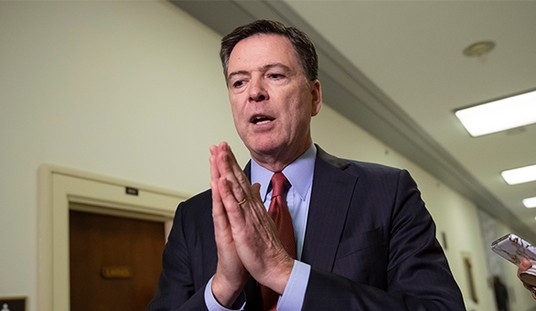
The 1970s throughout America were a decade of hideous fashions, bloated underperforming automobiles, soaring crime, and rampant graffiti. But I think you could make a case that unless you lived in the American Northeast in the 1970s, you couldn’t appreciate just how ugly the decade truly was. In South Jersey, where I grew up, even the trains that went through your town had a newfound putrescent decay and squalor.
Pardon the Sheldon Cooper-esque railroad-themed flashback to follow, but honest, I do have a point with this. In 1968, transportation behemoths the New York Central System and the Pennsylvania Railroad merged, forming the Penn Central. The paint scheme the newly formed railroad chose for its locomotives was a basic black, with a huge misshapen modernist-inspired “Mating Worms” PC logo and block sans-serif typeface underneath. The real problems began in 1970, when the railroad declared bankruptcy, and the expense of cleaning and maintaining the equipment was reduced to a low priority indeed.
As late as 1962, a passenger train pulled by a Raymond Loewy-styled electric locomotive that looked like this, arrived into the original Penn Station in New York, which still had its original McKim, Mead & White architecture, inspired by the Roman Baths of Caracalla.
By 1971, when Congress formed Amtrak to take passenger trains off the hands of the private railroad industry, Penn Station had been leveled to provide revenue for an over-regulated PRR, in the form of Madison Square Garden, replaced by a Miesian underground modernist facility that was stark and brutal. Yale’s Vincent Scully famously wrote after the transformation was complete, “One entered the city like a god; one scuttles in now like a rat.”
When passengers emerged from Penn Station (and the old pun my father used to tell me, “lead us not into Penn Station,” took on new meaning after the original’s demolition), departing from trains being pulled by filthy locomotives that now looked like this, they entered a Big Apple now rotted to the core. Compare the Manhattan as seen in Alfred Hitchcock’s classic 1959 film North By Northwest, which what began to follow on big screens, only a decade later, and you’ll be astounded at how quickly the dissipation set in:
Vincent Cannato, a historian at the University of Massachusetts, wrote the definitive book on John Lindsay, the mayor of New York from 1966 to 1973. Cannato’s book The Ungovernable City: John Lindsay and His Struggle to Save New York, tells the story of liberalism’s now-forgotten golden boy. Charming, improbably handsome, resolutely liberal, and Republican (until he switched parties), Lindsay had the dubious distinction of overseeing much of New York’s horrific decline into legal, fiscal, racial, and moral chaos.
Lindsay’s defenders are legion in New York. In their minds, everything was going great and then, suddenly, when Lindsay left office, the place went off a cliff overnight. Cannato says that whenever he appears at an event to discuss his book, the Lindsayites swarm to defend their hero. One of their primary talking points is the fact that Lindsay fulfilled his vow to “throw open the city to producers from Hollywood,” ushering in a renaissance in New York filmmaking.
And it’s true. But just look at the movies born of Lindsay’s efforts: Taxi Driver, The French Connection, The Prisoner of Second Avenue, Panic in Needle Park, and other films depicting a rotting Big Apple — a “voluptuous enemy” with “the stench of Hell,” to borrow a phrase from Pauline Kael’s review of Taxi Driver.
Hollywood may have exaggerated the extent of New York’s Stygian gloom, but you can only exaggerate the truth. And anyone who lived in New York City in the 1970s and 1980s can recognize that while Death Wish may have been a caricature, like any good caricature it captured the likeness better than the subject would have wanted. When I was a kid, street crime was a given, rationalized by many liberals as the price one had to pay to live in such a wonderful metropolis.
Crime, poverty, filth, graffiti, bad architecture, rampant pornography, this was Weimar-inspired modernism’s lowest point. As Daniel Henninger wrote for the Wall Street Journal in 2005, plenty of New York celebrity leftists decried the Giuliani-era cleanup of Manhattan, sneering loudly at the “Disneyfication” of the previously pornofied Times Square, and longed for the festering bad old days of the Bronson-DeNiro era. Henninger quoted actor John Leguizamo, who said that ‘70s-era New York “was funky and gritty and showed the world how a metropolis could be dark and apocalyptic and yet fecund,” And Fran Lebowitz, who described New York during the 1970s as a “a wreck; it was going bankrupt. And it was pretty lawless; everything was illegal, but no laws were enforced. It was a city for city-dwellers, not tourists, the way it is now.” And what was it like for the city-dwellers? Once again, Death Wish serves today as an inadvertent documentary of its times:
One of the better-known artifacts in the archaeology of New York is the movie “Death Wish.” Released in 1974, it stars Charles Bronson as a Manhattan liberal who snaps under the burden of New York’s violence and goes into the subways to mow down thugs the cops can’t or won’t catch. Back then the city’s audiences cheered and screamed as Bronson smashed one civil-liberties platitude after another.
Peter Hall, in his magisterial study of history’s great urban centers, “Cities in Civilization,” remarks offhandedly that “not for nothing did New York develop so rapidly after the first subways . . . brought their trains into the center of Manhattan.” The subways, of course, aren’t for the tourists but for unwealthy city-dwellers. Starting in 1970, fires, collisions and derailments routinely wrecked New York’s subways, injuring and even killing passengers. In August 1973, a chunk of concrete fell from the roof of the IRT Steinway tunnel and killed a passenger. A 1975 fire trapped 12,000 evening rush-hour passengers. But the cars were colorful. They were covered with graffiti, celebrated by Norman Mailer in a famously provocative paean to the graffiti painters.
The ’70s golden-agers in the Times story don’t deny what was going on then–but they kind of miss it. The photographer Mary Ellen Mark remembers “it was a time of costume and excitement, a time of youth and great energy.” Caleb Carr, the novelist of old-time New York, thinks the city has been “sterilized by the Giuliani years.” He says that “like a troublesome child taking Ritalin, New York may be more manageable now, but it has also sacrificed its personality.”
These comments raise the question of just what liberalism believes makes a city great or even golden, rather than just . . . interesting.
Does liberalism, or what passes for it today want their cities to be “great or even golden?” Based on past performance, the left isn’t exactly known as being champions of civic pride. And the left’s collective Death Wish, if you’ll pardon the pun, may soon be playing out in real life Manhattan, starting next year. As Nicole Gelinas writes in City Journal today, “Democrat Bill de Blasio didn’t just beat his Republican rival Joe Lhota in Tuesday’s election for New York City mayor. According to the headline in the New York Post, he achieved ‘utter destruction.’”
If the 1970s were any indication, there may well be plenty more to come. As it likely decomposes back into the Bad Old Days, go ahead and bite the big apple — don’t mind no maggots.
Update: When Hugh Hewitt wrote a book in 2006 titled Painting the Map Red, I don’t think this is quite what he had in mind:
Coincidence? I think NOT. pic.twitter.com/CbjtkDaN5P
— Rick Wilson (@TheRickWilson) November 6, 2013
Heh, indeed.™










Join the conversation as a VIP Member